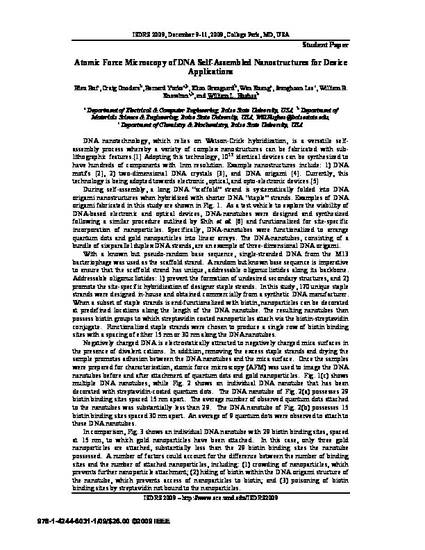
DNA nanotechnology, which relies on Watson-Crick hybridization, is a versatile selfassembly process whereby a variety of complex nanostructures can be fabricated with sublithographic features.[1] Adopting this technology, 1012 identical devices can be synthesized to have hundreds of components with 1nm resolution. Example nanostructures include: 1) DNA motifs [2], 2) two-dimensional DNA crystals [3], and DNA origami [4]. Currently, this technology is being adopted towards electronic, optical, and opto-electronic devices.[5]
©2010 IEEE. Personal use of this material is permitted. However, permission to reprint/republish this material for advertising or promotional purposes or for creating new collective works for resale or redistribution to servers or lists, or to reuse any copyrighted component of this work in other works must be obtained from the IEEE. DOI: 10.1109/ISDRS.2009.5378120
Available at: http://works.bepress.com/william_knowlton/60/
